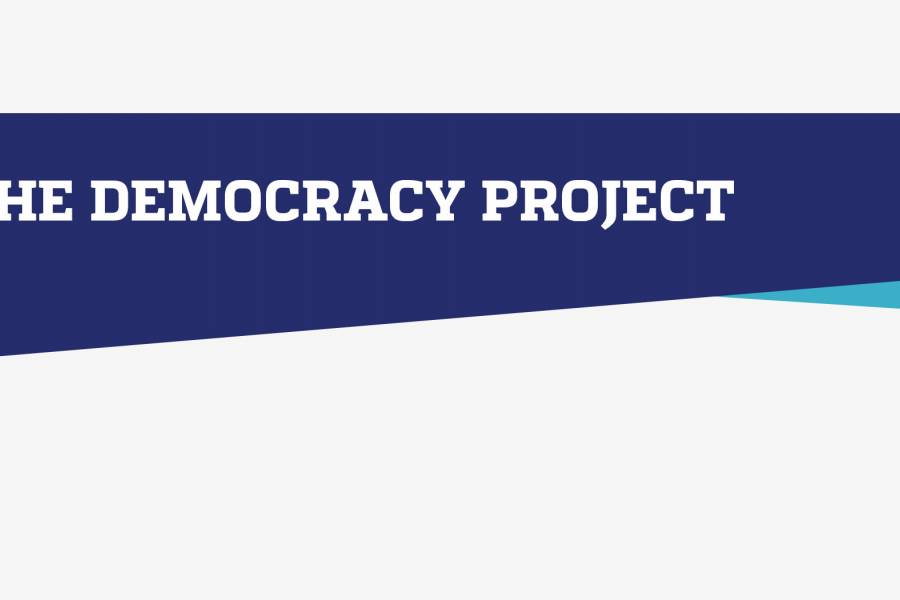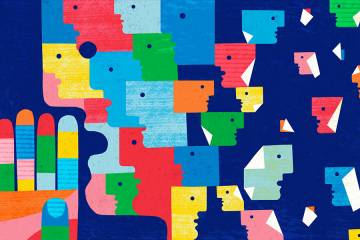
Image caption:Maureen van Stone (left) and Bonnielin Swenor share an interest in the link between health and the democratic process, and they view this connection as a key element in shifting societal perceptions of disability.Van Stone is the director of the Maryland Center for Developmental Disabilities at the Kennedy Krieger Institute and the founding director of a comprehensive medical-legal partnership, Project HEAL (Health, Education, Advocacy and Law), which provides advocacy and civil legal services for children with disabilities and their families. Swenor is an epidemiologist and director of the Johns Hopkins Disability Health Research Center, focused on addressing health inequities and enhancing inclusion for the disability community. Her work is motivated by her personal experience with disability.
Image credit: Will Kirk / Johns Hopkins University
This election season highlighted the double disparity the disability community faces to engage in the democratic process, as this group is simultaneously fighting for both the right to vote and access to voting. These barriers to voting persist in large part because of the pervasive negative views of disability that challenge societal inclusion. The paradox is that breaking this cycle of exclusion requires electing officials who are committed to creating disability-inclusive policies—a challenge when voters with disabilities are not fully included in the democratic process.
Although the 1990 Americans With Disabilities Act (ADA) and the subsequent ADA Amendments Act of 2008 mandate that people with disabilities have a "full and equal opportunity to vote," barriers to voting for this community persist. These obstacles include voter registration forms or ballots that are inaccessible to people who have low vision or are blind; lack of ramp access that prevents entry to polling places for people who use wheelchairs or other mobility aids; poll workers blocking people with intellectual or developmental disabilities from voting; in some states requirements for signature matching that unfairly impact people with degenerative physical disabilities; and the restriction of voting rights for people under guardianship. During the 2016 election, the Government Accountability Office examined polling places across the U.S. and found that 65% had inaccessible voting setups, and recommended that federal and state agencies update existing policies and guidance on voting accessibility. While it is too soon to know whether the 2020 election has overcome these barriers, there is a clear need for continuous data ensuring compliance with the ADA to allow the full inclusion of people with disabilities in the democratic process.
Recent data indicates that there are approximately 38.3 million eligible voters with disabilities, equating to one out of six voters in the United States. This estimate reflects an almost 20% increase in voters with disabilities since 2008 and outpaces a 12% rise in this population during the same period. But disability policy issues impact not only individuals with a disability but also their family members and caregivers, bringing those affected to a total of 67.7 million, or one out of four voters. These estimates indicate that the disability vote represents an important and growing constituency.
We do see progress, however. Since the 2016 presidential election there has been an increased focus on including people with disabilities in the democratic process. More candidates have developed and disseminated disability platforms, so that voters are aware of their positions on issues that directly impact people with disabilities, their family members, and caregivers. Our hope is that this momentum continues and translates to better inclusion of the disability community across society. A more inclusive and accessible democratic process is necessary for maximizing the health, equity, and inclusion of people with disabilities.
About The Democracy Project
The future of democracy as a system of government is increasingly uncertain. With a rise of populist forces globally and many existing democracies in regression, liberty itself seems under assault. In the United States, a diminished or warped democracy could have far-reaching repercussions for voting rights, the rule of law, education, the application of science, immigration, citizenship, and long-held societal norms we take for granted.
Both before and after a 2020 election in which many of the defining principles of democracy seemed to hang in the balance, an array of Johns Hopkins experts share their greatest hopes, their deepest fears, and their informed insights on the state of America's democratic experiment. Read more from The Democracy Project
Posted in Health, Voices+Opinion, Politics+Society
Tagged democracy, election 2020










